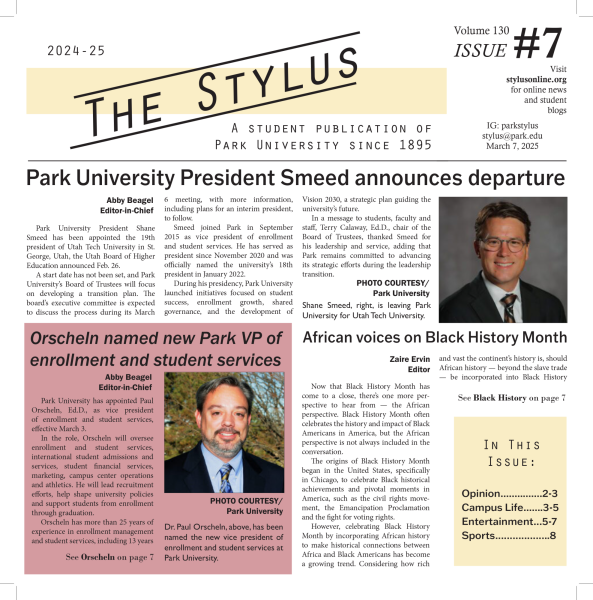Technology is fundamental for college students
Life without technology has become a thing of the past. Every day of my life I interact with and see others interact with technology. Laptops, computers, phones, and TV screens seem to be everywhere, yet I have been told that I cannot use technology for educational purposes during class by a Park professor. However, I believe that technology in the classroom can help students prosper and grasp concepts better.
I am a smart student. I attend all my classes, work hard to understand the material and receive good grades, but there are times where I do not grasp the material as it is being taught. Technology can help in those instances. When my professor references something I have never heard of before, I can turn to my laptop and look up the concept to better understand what they are talking about or referencing. I can also use technology to reference my class materials. I keep all of my completed assignments on my computer and have also bought e-textbooks for classes. For example, last semester my leadership professor was teaching about conflict resolution, which I had studied prior to my leadership course. I was able to pull up papers I wrote during my conflict class and share real life examples with the class to try to help everyone understand the subject better.
These experiences are supported by research. A 2021 study led by Tetiana Borova found that using technology in class improves students’ education because it allows “more resources and a wider range of exercises to form and develop students’ skills.”
Technology can also help students stay engaged. According to Lesley Mandel Morrow in 2002, “Technology appears to motivate children and to increase the time they are willing to spend practicing important academic skills.”
I believe banning technology in the classroom comes from a fear of distraction. However, from what I have seen in my own classes, students can find things to distract them even if they do not have technology. I think professors should instead try to get the class involved in discussions and class participation to ensure that students using technology are still paying attention and learning the material.
This is also important because technology will most likely be instrumental to student success after they graduate. More and more of the workforce uses technology in some way. Because of this, Morrow and others say that all educators, “must recognize the impact of technology in today’s workplace and train them (students) accordingly.”
By allowing it in classrooms, professors are teaching students to prioritize. Students are forced to choose whether to pay attention and complete the work, or to slack off and misuse their technology privileges. Similarly, in the real world, this is also an option. For example, my mom spends most of her workday behind a desk, on a computer. She could choose to do online shopping or play a game, but instead she knows better and completes her work because that is what she is getting paid for. Students need to learn to do the same.
I am not saying that all students in higher education should be forced to use technology in class, as this is not how all students learn. However, students should be given a choice on whether to use technology in class or not. At this point in their life, college students know how they learn best and what they need to do in order to succeed. College professors need to take that into account and create rules that allow everyone to succeed in the way that they learn best.
Your donation will support the student journalists of Park University. Your contribution will allow us to cover our annual website hosting costs, freeing up other funds for equipment, printing and training.







